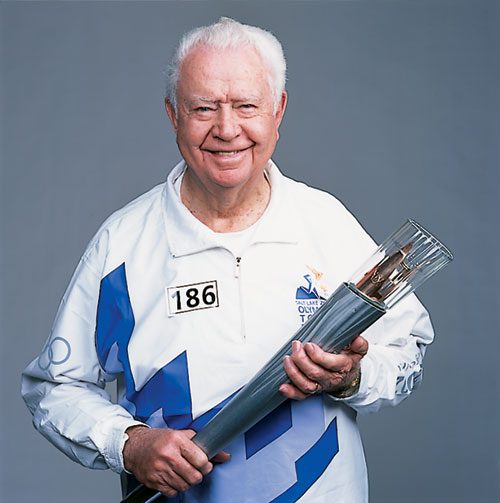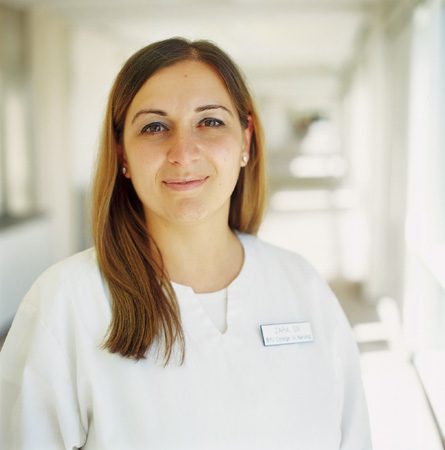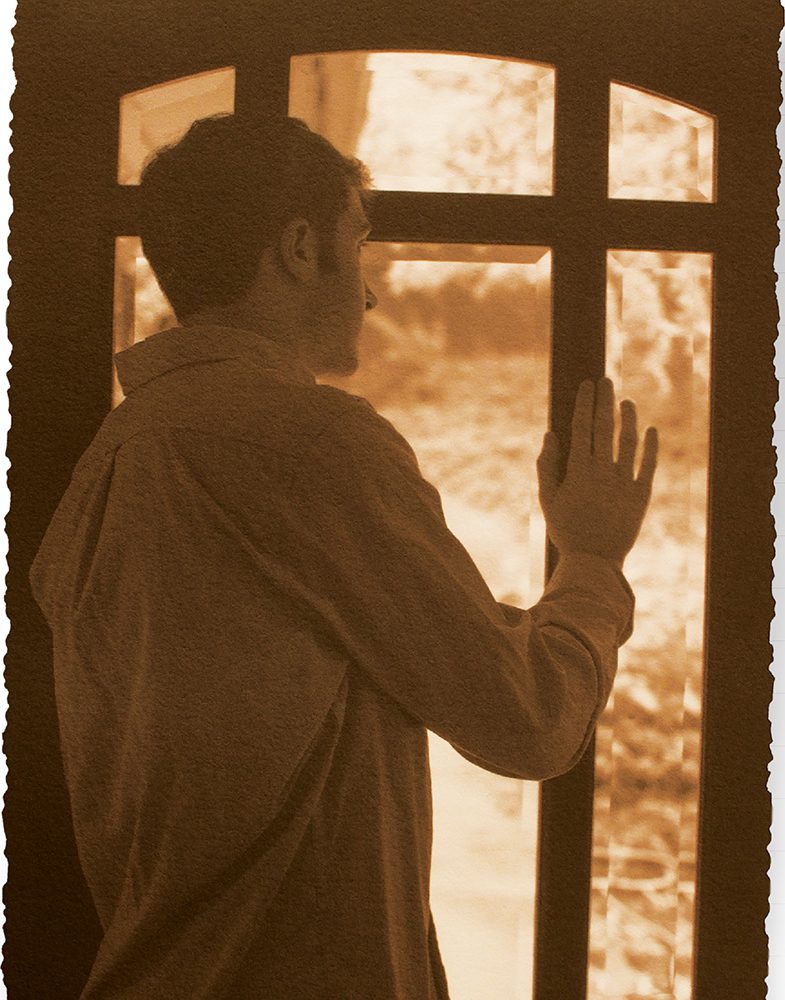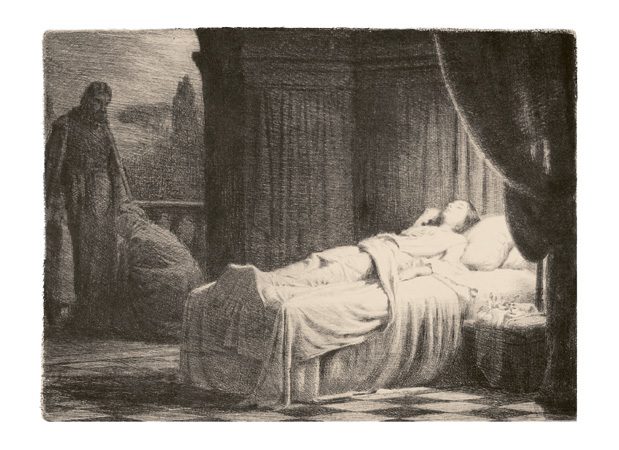 By Elaine S. Sorensen Marshall
By Elaine S. Sorensen Marshall
Though the College of Nursing began at BYU in 1952, leaders of The Church of Jesus Christ of Latter-day Saints, through the Relief Society, have always supported nursing education. Soon after the Relief Society was organized in 1842, the Prophet Joseph Smith set apart “noble and lofty women . . . to go about among the sick and minister to their wants” (in “Nursing in the Relief Society,” Relief Society Magazine, vol. 2, no. 7 [July 1915], pp. 316–17). Those women and the nurses who followed them in the late 19th century faithfully learned and practiced the art of healing.
Over the last decade the College of Nursing has adopted a theme I would like to explore. The phrase is “I would learn the healer’s art,” a line from the hymn “Lord, I Would Follow Thee” (Hymns,1985, no. 220).
I could hardly sleep the night before my first day as a nurse. I remember that day so vividly. The spring air was cool, and the sun seemed unusually bright. Two conflicting feelings left my heart pounding. First, I felt courage and couldn’t wait to put that first tube into the first orifice. On the other hand, I was afraid that by sheer inexperience I would violate the promise to “do no harm.”
That first day I carefully pulled on my support hose, little white nylon dress, and ugly prescription shoes. My crowning glory was the starched white cap that held my long hair tucked tightly beneath. I couldn’t wait to handle the instruments, titrate the fluids, and perform the treatment procedures. I wanted to cure. I wanted to care. I wanted to heal.
I have learned a lot about healing since that day. I have learned that healing is a process of restoring and becoming whole. I would like to share six lessons I have learned about the healer’s art.
• Healing Hurts
First, healing hurts. When I was a young nurse in the hospital, hardly a day went by that a patient did not ask, “Will it hurt?” If I had been truthful, the whispered answer would nearly always have been, “Yes, it will hurt.” I have learned that healing hurts. Life hurts. Healing really only begins when we face the hurt in its full force and then grow through it with all the strength of our soul. For every reward of learning and growing, some degree of pain is always the price. Author M. Scott Peck reminds us that if you do not want love or pain, you “must do without many things” (M. Scott Peck, The Road Less Traveled [New York: Simon and Schuster, 1978], p. 133). I think you would do without dating, graduating, getting married, or having children.
Sometime in your life you will know a crashing crisis or heavy heartache that will threaten all sense of logic or hope or certainty—from which, no matter how you emerge, nothing will ever be the same. Hurts come as unique losses, unwelcome surprises, fading hope, or grief.
This semester you may not get the 4.0 grade point average you need to keep your scholarship, or you may not get your first choice in graduate school or career. Perhaps that special person did not have the same “revelation” you think you had. Maybe this is the best you will ever look. Maybe someone you counted on wasn’t there for you. Perhaps someone in your past hurt you deeply. I know that pain. Also, I live a little of every day waiting for heaven, to see my son and mother again. Last semester two of our nursing students lost their fathers. I imagine that no success in school or career or life will be quite the same for them.
Some of us suffer the wrenching consequences of sin or just poor judgment. Some of you may now be entangled in activities with others—or perhaps on the Internet—that you wish you had never started. Or you may have fallen into a trap of debt. We hurt when we see our own failures or helplessly watch the unwise decisions of others. Our lives are changed forever not only by the pain but by facing our need to heal.
Sometimes we simply have too many demands or feel like we just don’t measure up. Daily life’s hundreds of additive stresses can drain hope and energy, drop by drop, toward spiritual depletion—leaving a need to heal. Pain is part of living. Pain brings us to the source of healing.
Elder Jeffrey R. Holland, of the Church’s Quorum of the Twelve Apostles, warned:
The world around you is an increasingly hostile and sinful place. Occasionally that splashes onto us, and perhaps, in the case of a few of you, it may be nearly drowning you. . . .
. . . You can change. You can be helped. You can be made whole—whatever the problem. All he asks is that you walk away from the darkness and come into the light, his light, with meekness and lowliness of heart. . . . Christ has “borne our griefs, and carried our sorrows,” Isaiah declared, “and with his stripes we are healed”—if we want to be (Isa. 53:4–5; Mosiah 14:4–5). [Jeffrey R. Holland, “Come unto Me,” Brigham Young University 1996–97 Speeches (Provo: BYU, 1997), p. 189; emphasis in original]
We can partake of the healing medicine of the Atonement of our Savior, who promised, “I have heard thy prayer, I have seen thy tears: behold, I will heal thee” (2 Kgs. 20:5).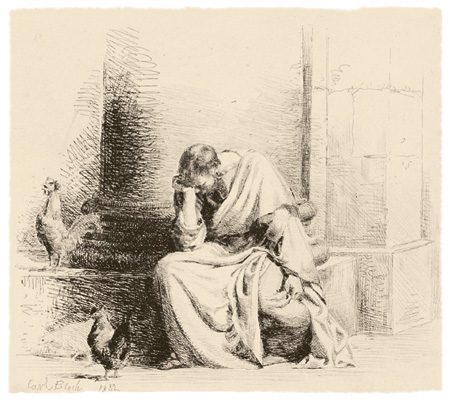 • Healing Is Active
• Healing Is Active
My second lesson is that healing is active—you have to be there. Your friend or your husband or wife or your mother cannot do it for you. You have to face the problem and the pain. To begin healing, you must acknowledge and feel the hurt. Only those who don’t feel, those without conscience, cannot heal.
My mother once told me of an experience she had one winter morning as she drove down to check the cattle in the lower pasture. She noticed a car off the side of the road. Inside she recognized a young mother and three children. When my mother asked if they needed help, the woman tearfully reminded her that this was the place of the accident two weeks earlier that had killed her husband. She answered, “We are just here to feel the hurt.”
On that first day as a nurse, I assumed cure, care, and healing to be synonymous. I have learned they are not the same. Healing is not cure. Cure is clean, quick, and done—often under anesthesia. The antibiotic kills the pathogen; the scalpel cuts out the malignancy; the medication resolves the distorted chemistry. Healing, however, is often a lifelong process of recovery and growth in spite of, maybe because of, enduring physical, emotional, or spiritual assault. It requires time. We may pray for cure when we really need healing. Whether for cell reconstruction, for nerve and muscle rehabilitation, for emotional recovery, or for spiritual forgiveness, healing needs work and time and energy.
Healing cannot happen in a surgical suite where the pain is only a sleepy memory. Cure is passive, as you submit your body to the practitioner. Healing is active. It requires all the energy of your entire being. You have to be there, fully awake, aware, and participating when it happens.
• Healing Is Private
My third lesson is that healing is private. The hymn “Lord, I Would Follow Thee” describes “hidden sorrow” in a “quiet heart” (Hymns, 1985, no. 220). Antoine de Saint-Exupéry wrote, “It is such a secret place, the land of tears” (The Little Prince, trans. Katherine Woods [New York: Harcourt, Brace and World, 1943], p. 28).
Apostle Neal A. Maxwell taught:
There is, in the suffering of the highest order, a point that is reached—a point of aloneness—when the individual (as did the Savior on a much grander scale) must bear it . . . alone. Even the faithful may wonder if they can take any more or if they are in some way forsaken.
Those who . . . stand on the foot of the cross often can do so little to help absorb the pain and the anguish. It is something we must bear ourselves in order that our triumph can be complete. [Neal A. Maxwell, All These Things Shall Give Thee Experience (Salt Lake City: Deseret Book, 1979), p. 43]
Healing is not only private, it is sacred. Private healing is not healing by abandonment. There is something so sacred about partaking of the power of the Atonement to overcome suffering, disappointment, or sin that it happens in the privacy of that special relationship between the mortal and the divine. Healing involves a private personal communion with the Savior, the Master Healer. It inspires a very personal reverence and awe. While on the earth Jesus often healed in private and then departed. When He healed, He often charged, “See thou tell no man; but go thy way” (Matt. 8:4; see also Luke 8:56).
To say that healing is private is not to diminish the marvelous power that comes from the help and compassion of others. Indeed, private healing often may not happen without the help of others. But much of the work of healing is done alone, inside the heart, in the company of the Spirit of the Lord.
Such secret healing is not a single event. It happens as a process of living. You cannot simply take off a day or start tomorrow like a new diet and return healed. It happens quietly while you face the pain. It happens over time as you live, work, study, and give to others.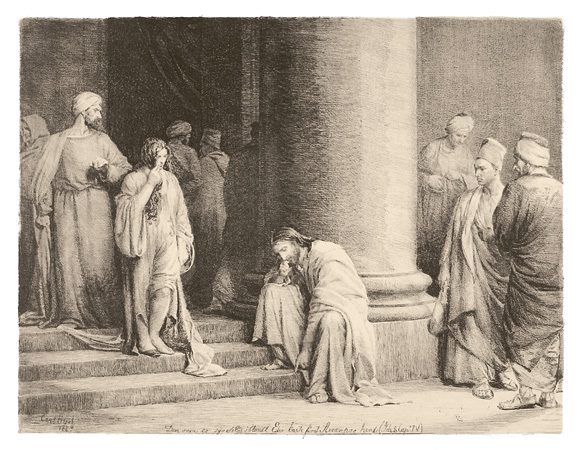 • Healing Teaches Us
• Healing Teaches Us
The fourth lesson of the healer’s art is that healing teaches us. When we have a terrible loss or pain, we may seek to “get back to normal” or to the way things were before, but they will never be the same. Pain changes us, but not in the same way that healing teaches us. Healing can help us to become more sensitive and more awake to life. Healing inspires repentance and obedience. Healing invites gifts of humility and faith. It opens our hearts to the profound complexities of truth, beauty, divinity, and grace.
Orson F. Whitney, an Apostle in the early 20th century, wrote:
No pain that we suffer . . . is wasted. It ministers to our education, to the development of . . . patience, faith, fortitude and humility. All that we suffer . . . , especially when we endure it patiently, builds up our characters, purifies our hearts, expands our souls, and makes us more tender and charitable, more worthy to be called the children of God . . . and it is through sorrow and suffering, toil and tribulation, that we gain the education that we come here to acquire and which will make us more like our Father and Mother in heaven. [Quoted in Spencer W. Kimball, Faith Precedes the Miracle(Salt Lake City: Deseret Book, 1972), p. 98]
• We Must Help Others to Heal
The fifth lesson of learning the healer’s art is the obligation and great gift it is to help others to heal.
Our current prophet, President Gordon B. Hinckley, admonished:
As members of the Church of Jesus Christ, ours is a ministry of healing, with a duty to bind the wounds and ease the pain of those who suffer. Upon a world afflicted with greed and contention, upon families distressed by argument and selfishness, upon individuals burdened with sin and troubles and sorrows, I invoke the healing power of Christ. [Gordon B. Hinckley, “The Healing Power of Christ,” Ensign, November 1988, p. 59]
Every day someone in your path is hurting, someone is afraid, someone feels inadequate, someone needs a friend. Someone needs you to notice, to reach out, and to help him or her to heal. You may not know who that is at the time, but you can give encouragement and hope. You can help to heal wounds of misunderstanding and contention. You can serve “in the cause of the Master Healer” (Hinckley, “Healing Power,” p. 52).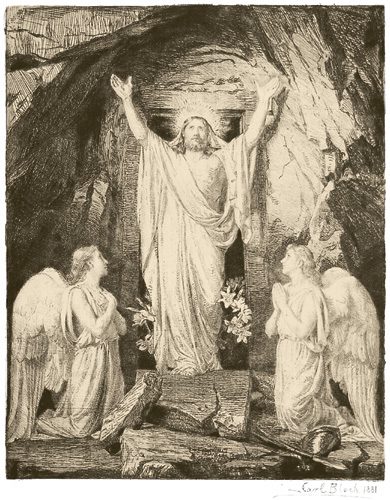 • Healing Is the Gift of the Savior
• Healing Is the Gift of the Savior
The last and greatest lesson of healing is that it is a divine gift that is always there from a loving Heavenly Father. If you have a pain or sorrow or disappointment or sin or just a grudge that needs healing, the Savior simply says, “Come unto me.”
In the last few weeks as I have studied the scriptures, I have read only the accounts of Jesus healing. I have been humbled and amazed by how much of the Lord’s mission on this earth was devoted to healing. When Jesus called and ordained the Twelve, He specifically gave them the power to heal (see Matt. 10:1, Mark 3:14–15) and instructed them to go about using their gifts “freely” (Matt. 10:8).
As Jesus healed, the scriptures say, “All the people were amazed” (Matt. 12:23). They brought their sick, their “blind, and dumb” (Matt. 12:22), those that were “possessed with a devil” (Matt. 12:22; also Mark 1:32), and their dead. They sought Him every day and into the evening. So great was His reputation and His healing power that they sought to “only touch the hem of his garment; and as many as touched were made perfectly whole” (Matt. 14:36). “And Jesus went about all the cities and villages, teaching . . . and preaching the gospel . . . , and healing every sickness and every disease among the people” (Matt. 9:35).
When Nephi was shown the vision of his father, Lehi, he saw the multitudes and the sick who were “healed by the power of the Lamb of God” (1 Ne. 11:31). When the Savior appeared in the Americas, He healed “every one as they were brought forth unto him” (3 Ne. 17:9).
President Hinckley promised:
Jesus of Nazareth healed the sick among whom He moved. His regenerating power is with us today. . . . His divine teachings, His incomparable example, His matchless life, His all-encompassing sacrifice will bring healing to broken hearts, reconciliation to those who argue and shout, even peace to warring nations if sought with humility and forgiveness and love. [Hinckley, “Healing Power,” p. 59]
Elder Holland reminded:
That is why we make solemn covenants based on Christ’s atoning sacrifice, and that is why we take upon us his name. In as many ways as possible, both figuratively and literally, we try to take upon us his identity. We seek out his teachings and retell his miracles. We send latter-day witnesses . . . around the world to declare his message. We call ourselves his children, and we testify that he is the only source of eternal life. We plead for him to swing open the gates of heaven in our behalf and trust everlastingly that he will, based upon our faithfulness. [Holland, “Come unto Me,” p. 188]
Elder Holland further noted:
The Church . . . is more like a hospital provided for those who wish to get well. . . . For some of you that is simply to live with greater faith, to believe more. For some of you it does mean to repent. . . . For virtually all of us it means to live more by the promptings and promises of the Holy Ghost and to “press forward with a steadfastness in Christ, having a perfect brightness of hope, and a love of God and of all men.” . . . (2 Ne. 31:20). [Holland, “Come unto Me,” p. 189]
More than 180 years ago, the heavens were opened, and some 160 years ago, the Relief Society began the education of nurses to care for the healing needs of the Saints. Fifty years ago, a college of nursing was born at BYU to enable students to learn science, skill, and healing. Today each of us at this university with its special mission has a unique opportunity to come to know the Master Healer and to learn the healer’s art. I leave you my testimony that He lives, the Savior, the Master Healer, the One “with healing in his wings” (Mal. 4:2).
Elaine S. Sorensen Marshall is dean of the BYU College of Nursing. This article is adapted from a devotional address given Oct. 8, 2002, in the Marriott Center.
To read the full text of this devotional address, which includes a historical overview of nursing in the Church of Jesus Christ, see speeches.byu.edu/.
Send comments on this article to magazine@byu.edu.







